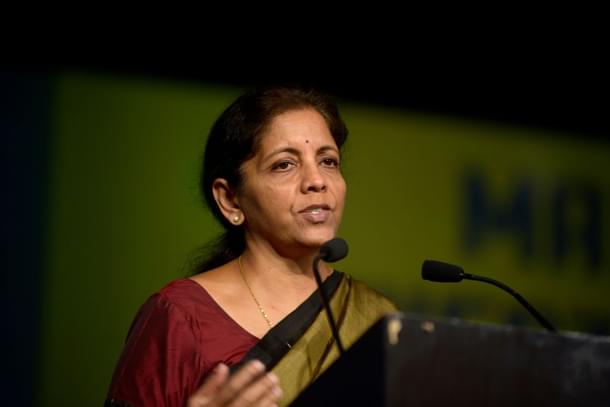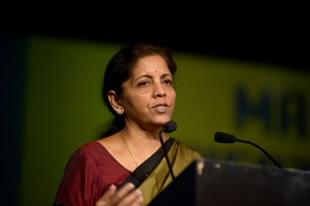Defence
Defence Budget – Better Spending As Important As More Money
Subrata Saha
Jan 28, 2018, 10:29 AM | Updated 10:29 AM IST
Save & read from anywhere!
Bookmark stories for easy access on any device or the Swarajya app.


On 29 January the Budget Session of the Parliament is scheduled to begin. Three days before on the Republic Day, the Nation’s military might was paraded down the historic Rajpath. Starting from the Rashtrapati Bhavan, home to the Supreme Commander of India’s Armed Forces, the glorious parade went past the India Gate - the Memorial that commemorates 82000 Indian soldiers who lost their lives fighting for the British during World War I and the Third Anglo-Afghan War. The Amar Jawan Jyoti – the Eternal Flame that burns day and night under the arch of the India Gate, was added after the 1971 India - Pakistan War in memory of the Soldiers who made the supreme sacrifice for the liberation of Bangladesh and the classic victory against Pakistan. As always the parade did well to reassure the Nation of our military capabilities and also make an impression on our friends, this year we had ten Heads of State of ASEAN gracing the occasion.
Looking beyond the military spectacle, there is anxiety over the Nation’s military modernisation and defence preparedness. A concern which the Budget is expected to address, particularly in the light of the unfolding security scenario.
In the last couple of years, the China-Pakistan embrace has got much tighter and so has the convergence between China and Russia. China has intensified engagements with all South Asian and several Indian Ocean Region States. The unusually prolonged face off at Doklam and the belligerence demonstrated by the Chinese spokespersons and media, provide distinct pointers on what to expect in the future.
In Jammu and Kashmir, though the internal security situation has been brought under control, the tensions along the line of control have multiplied manifold in recent times. Alongside the increasing direct security challenges, there are international expectations for India to be a ‘net provider of security in the Indian ocean and beyond’.
Meeting the competing budgetary demands of different sectors is always a challenge for the Finance Minister. In arriving at the correct allocation for Defence, three important facts need to be kept in mind:
• India’s security challenges are becoming increasingly complex.
• Even though India’s defence budget increased marginally year on year, in terms of percentage share of GDP, there is decline. In 2017-18 the Defence budget was 1.56 percent of the estimated GDP, the lowest since 1956-57.
• In 2016 India’s military spending at $56 billion was the fourth highest in the world. In terms of per capita military expenditure however, it was the lowest amongst major countries. Israel was number one with $2104, US was fourth with $1891. India was at seventeenth place with $42.
The Parliamentary Standing Committee on Defence 2017-18 expressed concern on the, “back to back decline” in the defence allocation when there exists “a huge void in India’s defence preparedness, and the armed forces have grave shortages in many areas”. In 2016-17 only 12 percent of the total modernisation budget of Rs 70000 Crore was available for signing new schemes as the rest was earmarked for committed liabilities of earlier contracts. In 2017-18 the modernisation budget for Army and Navy declined, while Air Force increased due to some big contracts.
While the bid for additional allocation of budget is well justified, there’s more to the modernisation narrative. It is ironic that on the one hand there is inadequacy of funds for modernisation, on the other hand there is underutilisation of capital allocations year after year. In 2016-17 the underutilisation was Rs 7393 crores (10.5 percent). Over the years the emphasis on process in procurements is so much that outcomes do not seem to matter and allocations remain unspent. The recommendations of the Parliamentary Standing Committee that capital allocations should be “Roll on” and “Non- Lapsable”, need to be implemented so that funds are spent on what they are specified for.
In the absence of a Chief of Defence Staff joint planning, threat analysis, assessments on future warfighting and prioritisation of modernisation requirements do not get their due. Resultantly, “Competitive Jockeying”, by the three services is only natural.
The procurement process requires urgent reengineering with an end to end digitised system. Manual and personality driven interventions need to be minimised, to be able to at least effectively spend what is allocated.
Any discourse on the high share of revenue expenditure because of manpower costs; usually gets detracted by the high expenditure of Army’s manning requirements. The Army’s requirement of manpower is justified by manpower intensive operations like physically manning every inch of the line of control, line of actual control and the ongoing counter terrorist operations. In this discourse the scope for reforms essential on several other revenue expenses get glossed over.
The Defence Procurement Procedure 2016 articulated the policy priority for indigenisation in unequivocal terms. The implementation however has been hindered by several process bottlenecks. Additional allocations have to be justified by hard-nosed economics. The defence budget and force modernisation has to contribute to the indigenous industrial base, R&D and job creation. Saving to exchequer can happen if we optimise on the revenue to employment ratio in the public sector and leverage potential of the private sector much more. The recent simplification of the Make 2 by the Defence Minister Nirmala Sitharaman is a good beginning on this count.
For the defence budget to be able to effectively contribute to both modernising and sustaining military capability the allocation needs to be pegged at 2 to 2.5 per cent of GDP. Concomitantly all the connected functions need urgent reform – digitised capital procurement, optimised revenue expenditure, incentives for Make in India, structures and policy for joint military planning and prioritisation of requirements.
Lt Gen Subrata Saha (retd) is the former deputy chief of army staff and presently the principal adviser, Confederation of Indian Industry, and director general, Society of Indian Defence Manufacturers.





